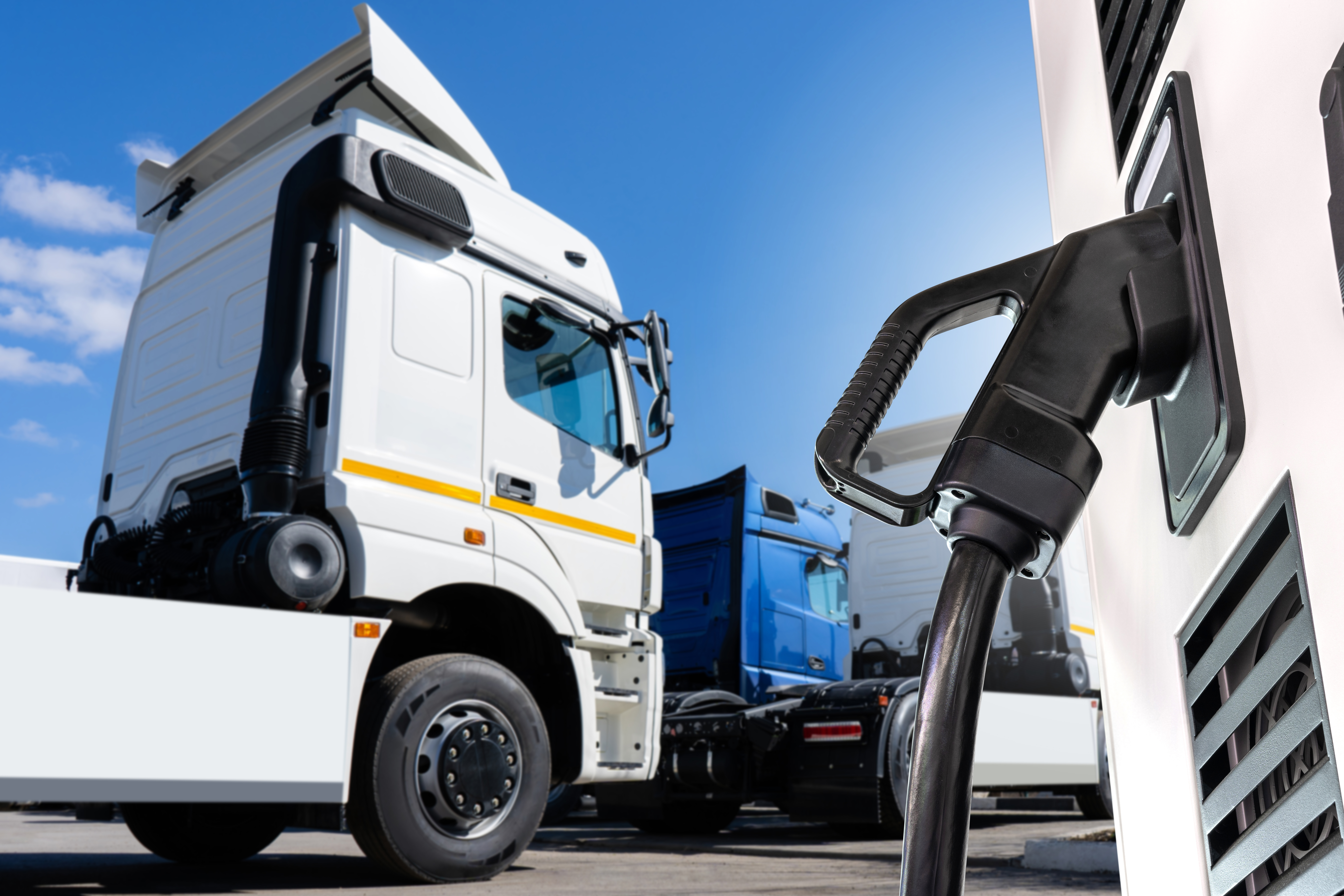
by Michael Miller, MN8 Business Development
Fleet operators are increasingly at the forefront of the transition to electric vehicles, driven by regulatory pressure, sustainability targets, and compelling economic incentives. At MN8 Energy, we recognize this journey is complex, filled with both opportunities and challenges. Charging Up is our blog series exploring fleet electrification—covering the benefits, hurdles, and practical solutions MN8 provides to simplify this transition.
Picture this: You’re a fleet manager, and like most people in your position, you’ve been tasked with figuring out how to electrify your fleet. Maybe you’ve investigated shared offsite charging depots—great idea if you’re land-constrained or leasing space. But then you look around your own yard: a sea of asphalt, maybe used for trailer storage, employee parking, or just sitting idle. And you start to wonder: Why couldn’t this be a charging depot?
The truth is, it can. In fact, it might be the best opportunity you have—not only to electrify your fleet, but also to build a long-term revenue stream for your firm. That’s the concept behind co-located shared hubs, a model MN8 Energy is actively deploying with forward-thinking fleet operators.
What is a co-located shared hub?
Unlike a typical shared depot built and owned entirely by a third-party developer, a co-located shared hub starts with your land. You bring the site, and we bring the rest—engineering, capital, construction, operations, and charger management.
You become the anchor tenant, guaranteeing access to dedicated charging at the best possible rates. We work with you to design the hub around your needs first—your vehicle types, routes, shift schedules, and growth forecasts, and then we co-market the facility to other fleets. As the hub grows in utilization, your firm doesn’t just save money on fueling; it makes money. It’s a true profit-sharing model: MN8 assumes the risk; you share in the upside.
Why are fleets doing this?
Because they’re reading the tea leaves EVs aren’t going away. Regulations may ebb and flow, but the long-term direction is clear—the technology and economics are improving. Savvy operators realize that the best way to lead the pack isn’t by merely buying trucks—it’s by having a stake in the infrastructure.
Think about the advantages:
- Site control: You own the land without long landlord negotiations or lease friction.
- Lowest charging rates: As the anchor, you lock in discounted per-kWh pricing.
- Revenue potential: With additional use, you share in the margin on day 1.
- No CapEx: MN8 funds the infrastructure and handles everything from permitting to operations and maintenance.
And most importantly: you stay focused on running your fleet. We handle the rest.
What makes a good co-located site?
For an effective hub, you don’t need a pristine facility or a massive footprint. A good candidate site typically has:
- Ownership: You own the site (or have long-term control).
- Space: Enough land to support heavy vehicle circulation and charger installation.
- Power access: Near existing grid infrastructure or substations.
- Proximity: Close to high-demand freight zones like ports, intermodal hubs, or airport corridors.
If you’re unsure about your site’s suitability, don’t worry. MN8 can help evaluate its feasibility—power, permitting, layout, all of it.
This isn’t just about electric fuel. It’s about forming a partnership.
Electrifying your fleet is more than just swapping out vehicles and plugging in—it’s about making smart infrastructure decisions that scale with your business and unlock long-term value. If you’ve got land, you’ve got leverage. With MN8’s co-located shared hub model, you can turn an underutilized yard into a fully financed, revenue-generating charging depot—custom-built for your needs and ready to serve other fleets.
This isn’t just about sustainability. It’s about resilience, profitability, and staying ahead of the curve.
Do you have a site in mind? Let’s evaluate it together. Our team is ready to help you assess feasibility, unlock incentives, and take the first step toward electrifying your operations and monetizing your real estate.
Reach out at DES@mn8energy.com and let’s turn that parking lot into your next business opportunity.
Coming Up Next: Turning EV Charging into Revenue—How LCFS Credit Monetization Works
In our next post, we’ll dive into how Low Carbon Fuel Standard (LCFS) credits can transform your charging infrastructure from a cost center into a revenue-generating asset. We’ll break down the difference between throughput and capacity-based credits and explain how MN8 simplifies the entire LCFS monetization process. Stay tuned to learn how to unlock new value from your EV investments.